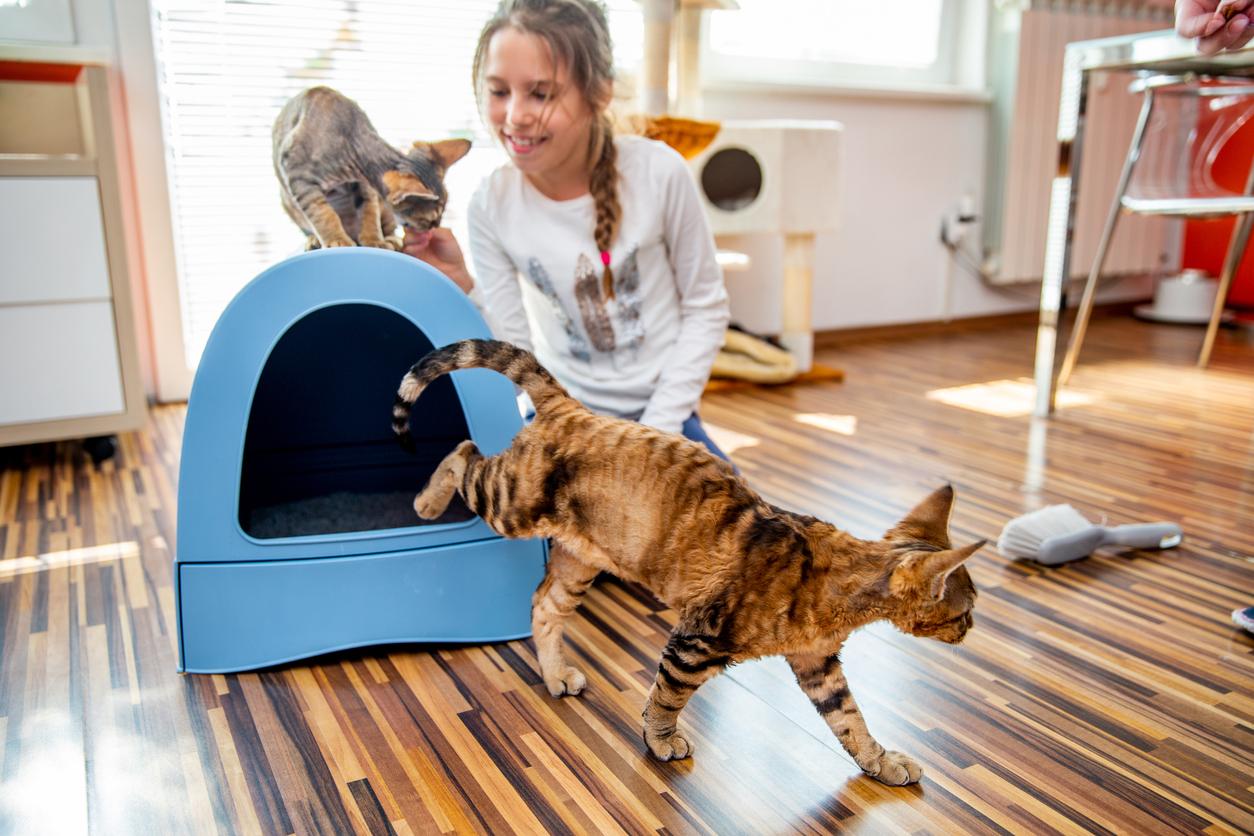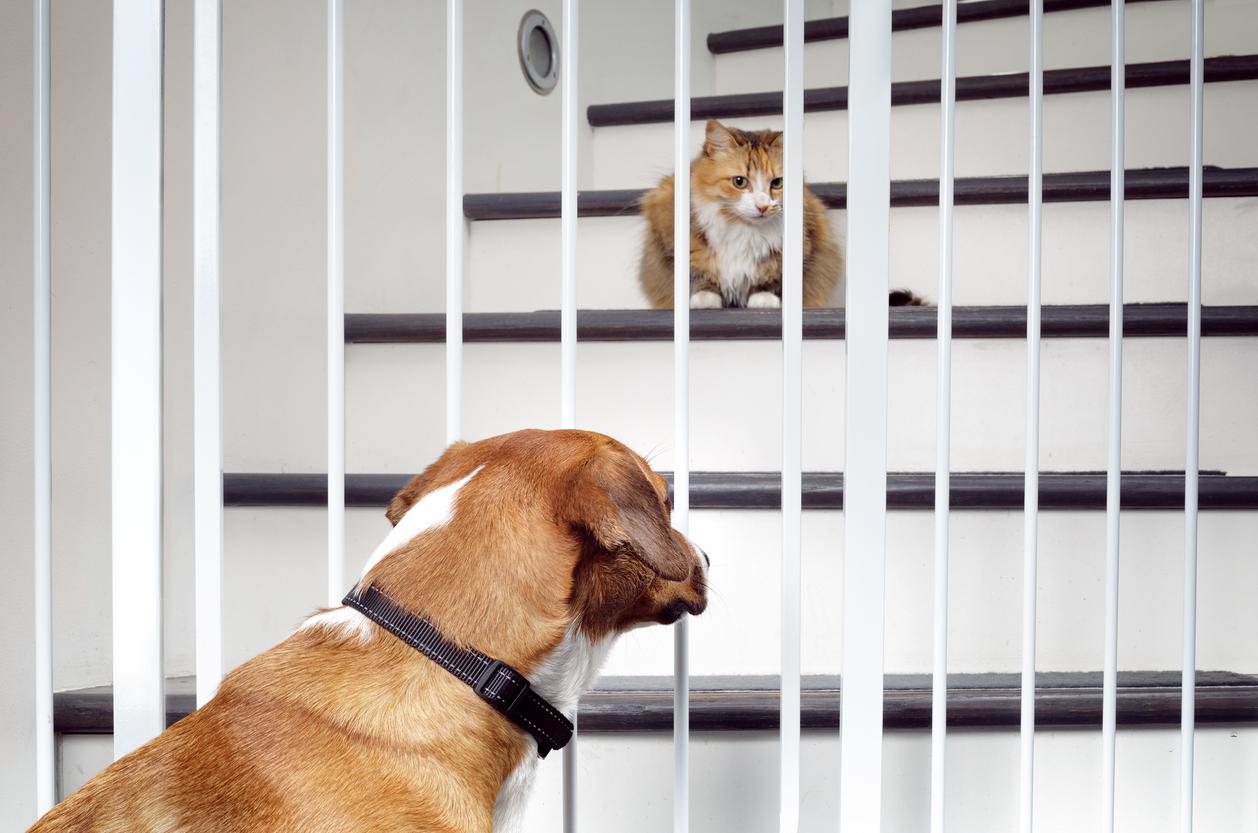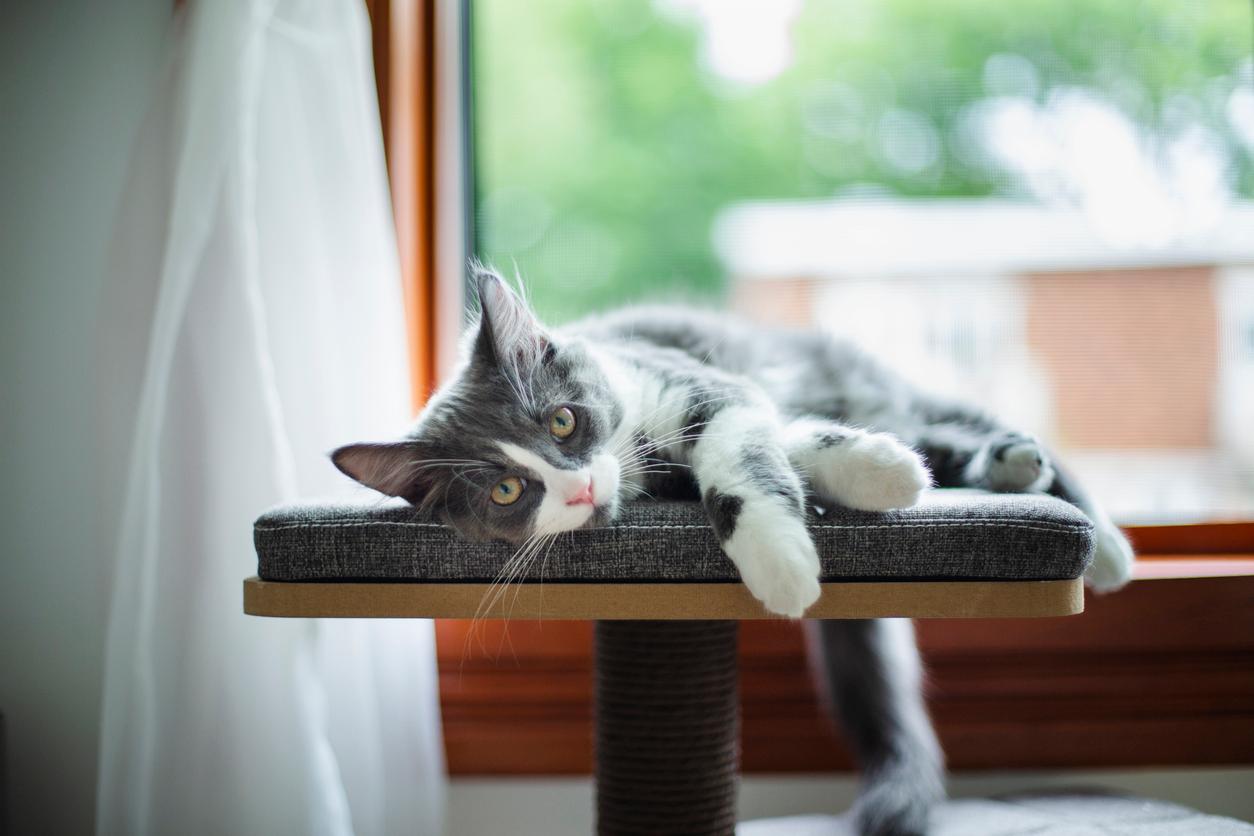Here Are Safe and Successful Methods to Keep Your Dog out of the Litter Box
A dog snacking from the cat's litter box isn't immediate cause for health concerns, vets say, but you can safely discourage the behavior.
Published Feb. 22 2024, 1:28 p.m. ET

Despite the adversarial relationship depicted in cartoons, many family dogs and cats get along well and may sometimes engage in behavior that their humans find confusing and gross. It's fairly normal for dogs to eat the poop of other animals, and it's not uncommon for dogs to consider the family cat's litter box a free buffet of tasty snacks.
While some veterinarians and trainers have recommended sprays or stern yelling as methods to deter behavior, this is considered by some certified behaviorists to be an inhumane and unnecessarily aggressive approach.
Below, we explore ethical and effective ways to curb your dog's litter box lust, safely redirecting their behavior — and appetite.
1. Use an enclosed litter box.

The number one recommendation from a veterinarian, via Bored Panda, is to utilize a litter box with a lid to form an enclosure. The lid may also aid in blocking the odor from traveling to your dog's nose, further assisting in helping them resist temptation.
2. Ensure the litter box is cleaned daily.

As a proud human to two emotional support cats, our family established a routine of cleaning the litter twice (upon waking up and before bed) when we're home all day and three times (an additional cleaning before leaving the house) if we're going out.
Per Hill's Pet Nutrition, while it isn't necessarily realistic to clean every time your cat uses the box, keeping it cleaned daily (which you already should be doing) effectively removes the waste your dog is seeking.
3. Install a baby gate.

Per the Ohio-based West Park Animal Hospital, the right model of a baby gate can provide your cat sufficient room to navigate their way to the litter box while providing a barrier to keep the family dog out of the box.
4. Use an elevated litter box.

Per the Litter-Robot blog, an elevated litter box affords cats the privacy they often seek. For cats who cannot use one due to physical or age-related needs, Litter-Robot recommends a ramp to provide them a safe accommodation to use a box of this nature.
5. Designate a special room or area for the litter box away from the dog.

One of the biggest upgrades we enjoyed when we moved into a multi-bedroom home was designating space for our cats to have privacy away from rescue and foster dogs.
While not every home affords the luxury and ample space to name an entire room just for the cats, according to Bored Panda if there is a space where the dog rarely goes, it might prove useful to place the litter box there.
6. Work with a certified behaviorist to explore humane solutions.

While some trainers advocate for the use of negative reinforcement strategies to stop dogs from getting into the litter box, finding a certified and educated behaviorist allows families to get to the root cause of the issue and remedy the situation in a humane way.
Whether it's modifying feeding routines or creating a plan that works for human and companion animal, this method promises the safest and most loving way to address the situation.